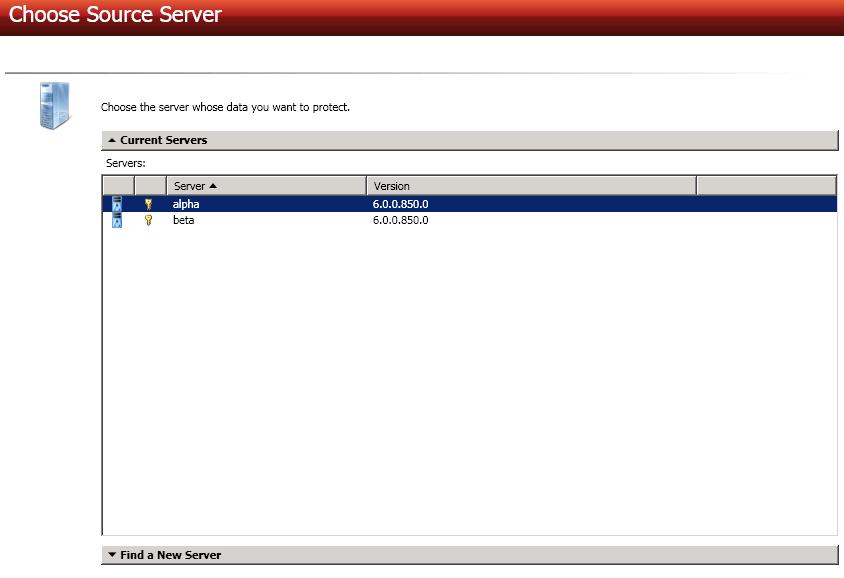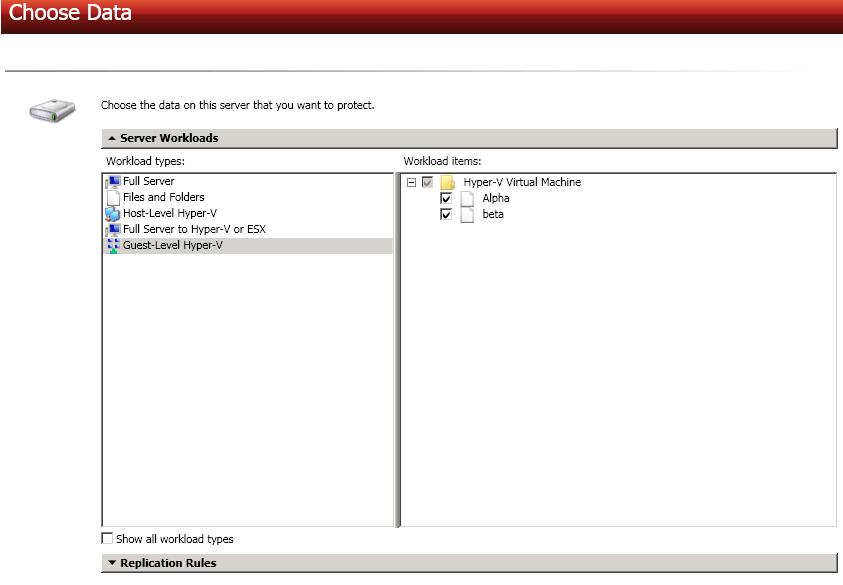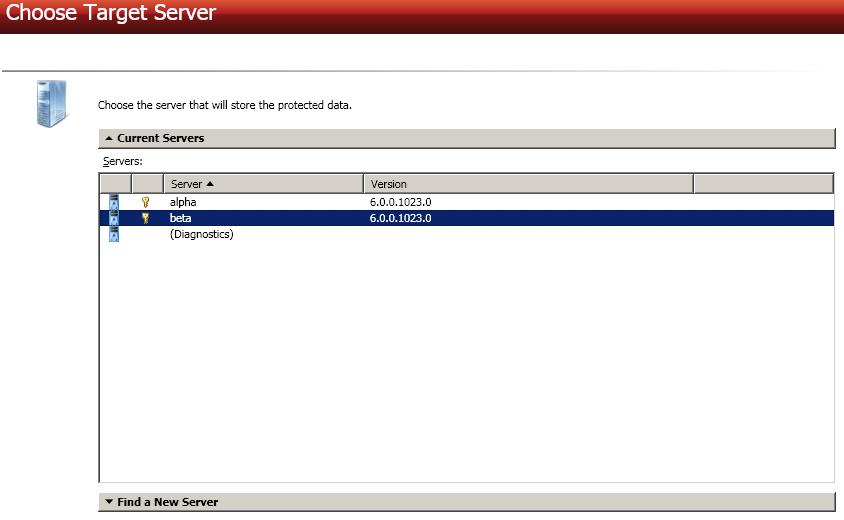

|
Use these instructions to create a V to Hyper-V job.
Click Get Started from the toolbar.
Select Double-Take Availability and click Next.
Select Protect files and folders, an application, or an entire Windows server and click Next.
Choose your source server. This is the Hyper-V server or cluster that is hosting the virtual machines that you want to protect.

If you enter the source server's fully-qualified domain name, the Double-Take Console will resolve the entry to the server short name. If that short name resides in two different domains, this could result in name resolution issues. In this case, enter the IP address of the server.
When specifying credentials for a new server, specify a user that is a member of the local Double-Take Admin and local administrator security groups. The user must also have administrative rights for Microsoft Hyper-V.
Choose the type of workload that you want to protect. Under Server Workloads, in the Workload types pane, select Guest-Level Hyper-V. In the Workload items pane, select the virtual machines on the Hyper-V source that you want to protect. The list of virtual machines will vary depending on whether your source is a Hyper-V server, cluster, or node.
If the workload you are looking for is not displayed, enable Show all workload types. The workload types in gray text are not available for the source server you have selected. Hover your mouse over an unavailable workload type to see a reason why this workload type is unavailable for the selected source.

Choose your target server. This is the Hyper-V server that will store the replicas of the virtual machines from the source.

If you enter the target server's fully-qualified domain name, the Double-Take Console will resolve the entry to the server short name. If that short name resides in two different domains, this could result in name resolution issues. In this case, enter the IP address of the server.
When specifying credentials for a new server, specify a user that is a member of the local Double-Take Admin and local administrator security groups. The user must also have administrative rights for Microsoft Hyper-V.
You have many options available for your V to Hyper-V jobs. Configure those options that are applicable to your environment.
Click a link below to see the options available for that section of the Set Options page.
Double-Take validates that your source and target are compatible. The Summary page displays your options and validation items.
Errors are designated by a white X inside a red circle. Warnings are designated by a black exclamation point (!) inside a yellow triangle. A successful validation is designated by a white checkmark inside a green circle. You can sort the list by the icon to see errors, warnings, or successful validations together. Click on any of the validation items to see details. You must correct any errors before you can enable protection. Depending on the error, you may be able to click Fix or Fix All and let Double-Take correct the problem for you. For those errors that Double-Take cannot correct automatically, you will need to modify the source or target to correct the error, or you can select a different target. You must revalidate the selected servers, by clicking Recheck, until the validation check passes without errors.
Before a job is created, the results of the validation checks are logged to the Double-Take Management Service log on the target.
Once your servers have passed validation and you are ready to establish protection, click Finish, and you will automatically be taken to the Manage Jobs page.
Because this job type allowed you to create more than one job at a time, options that are job specific were not presented during the job creation process. Once the jobs are created, you can edit each one individually to see and edit all of the various job options. See Editing a V to Hyper-V job.